Best
DAW for
MAC
users
Pro X POWERFUL, INITIATIVE DAW
-
Overall: Comprehensive
Library of Sounds -
Best Feature: Advanced
MIDI Editing -
TedScore™: 9/10
Best
Professional
DAW
-
Overall: Latest in the award-winning digital audio workstation series.
-
Best Feature: Offers a comprehensive range of features.
-
TedScore™: 9/10
Best
Beginner DAW
-
Overall: Perfect choice for basic melody and loop creation.
-
Best Feature: Multi-touch, MIDI learn, live DJ control, visualizer effects plug-in.
-
TedScore™: 8/10
Are you curious about the secret weapon behind your favorite tracks? In this article, we’ll answer the question, “What DAW do most producers use?” and uncover the digital audio workstations and audio production software that are shaping the music industry today!
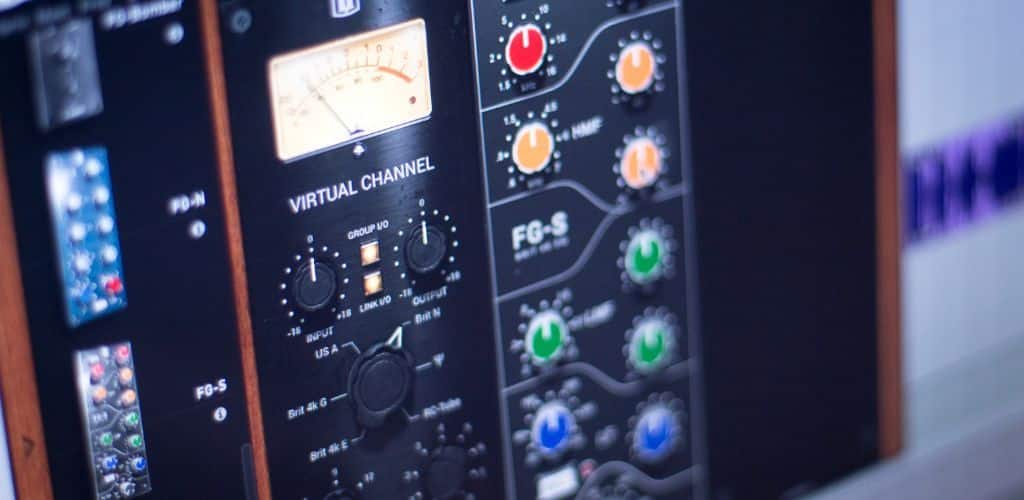
From hip-hop to electronic and everything in between, the right DAW can make all the difference in a producer’s workflow and creativity.
We’ll explore the top choices among professionals, highlighting their unique features and what makes them stand out.
Introduction to Music Production Software
Music production software, commonly known as digital audio workstations (DAWs), has transformed the way music is created, recorded, and produced. Gone are the days when music producers needed a fully equipped studio to bring their ideas to life.

With the advent of DAWs, the entire music production process can now be managed within a digital environment, offering unprecedented flexibility and creativity.
A DAW is a powerful software application that provides a suite of tools for manipulating sound. Whether you’re recording multiple audio tracks, applying effects and filters, or mixing and mastering your final product, a DAW offers everything you need to create professional-quality music.
This digital revolution has democratized music production, allowing anyone with a computer and a passion for music to produce tracks that rival those made in high-end studios.
The Titans of DAWs
When it comes to music creation software, a few names stand out from the crowd. Let’s take a closer look at the heavyweights in the industry.
Ableton Live
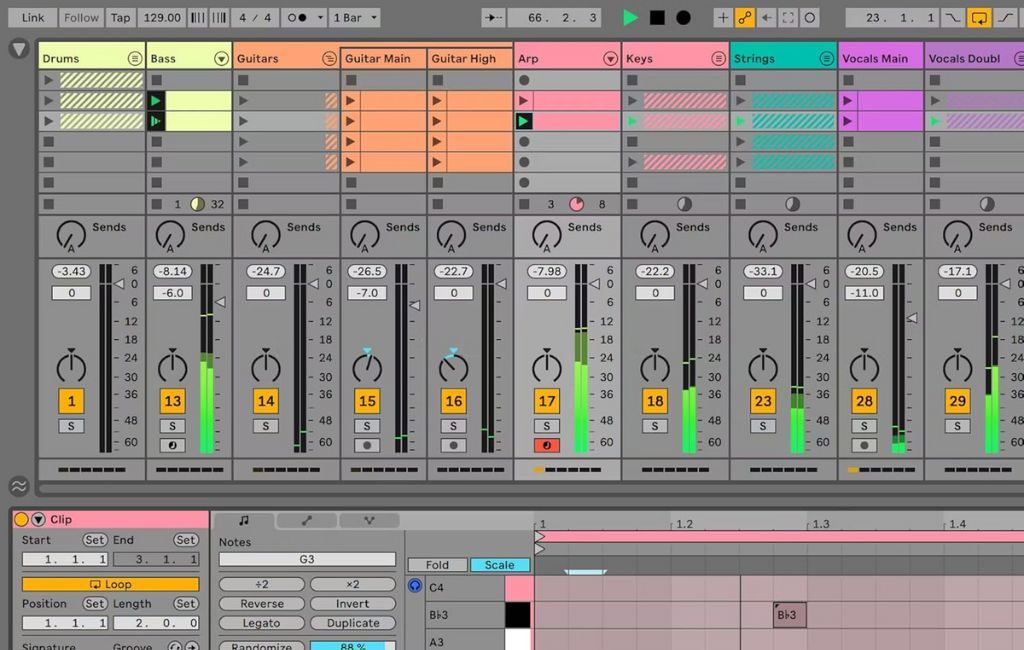
Known for its intuitive interface and powerful capabilities, Ableton Live is a favorite among electronic music producers. As a leading live performance software, its session view allows for spontaneous creativity, making it perfect for live gigs.
Ableton Live 12 Suite

FEATURES: Latest in the award-winning digital audio workstation series.
OTHER INFO: Offers a comprehensive range of features.
- Can edit multiple tracks simultaneously with linked-track editing.
- Inclusion of Max for Live enabling users to expand the software's capabilities.
- Higher price point compared to other editions of Ableton Live.
When you click ‘Check Price’, you’ll see there are loads of great places to buy this item. Our personal favorite is Sweetwater for the US, and Thomann and Gear4Music for the UK & Europe.
They are the largest music retailers, with excellent customer service, competitive prices, really fast shipping, and the longest guarantees.
The professional musician who wrote this article combined many things,
from the product build, manufacturer’s reputation through to feedback
from other users, to create our famous TedScore™.
Logic Pro X
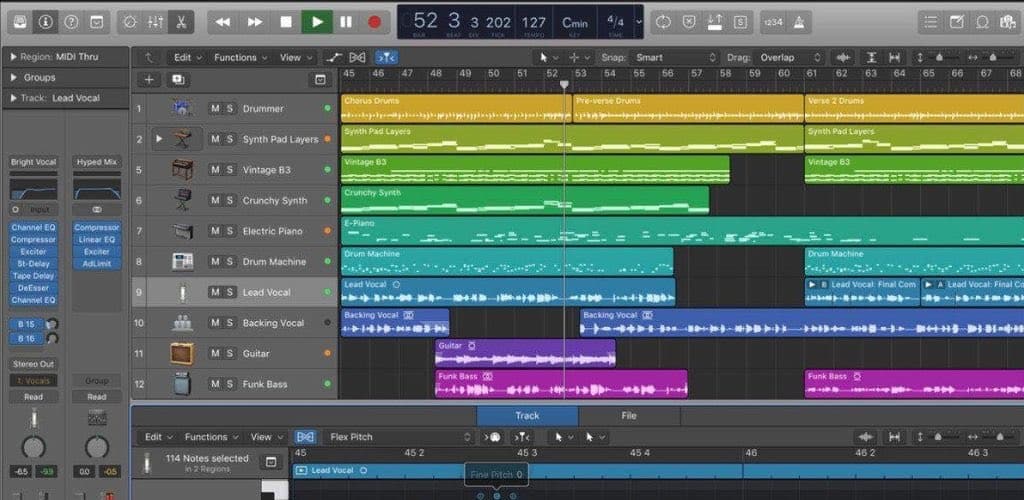
Apple’s Logic Pro X is a go-to audio editing software for many producers, especially in the pop and hip-hop genres. With its extensive library of sounds and plugins, it offers a comprehensive environment for music creation.
Logic Pro X
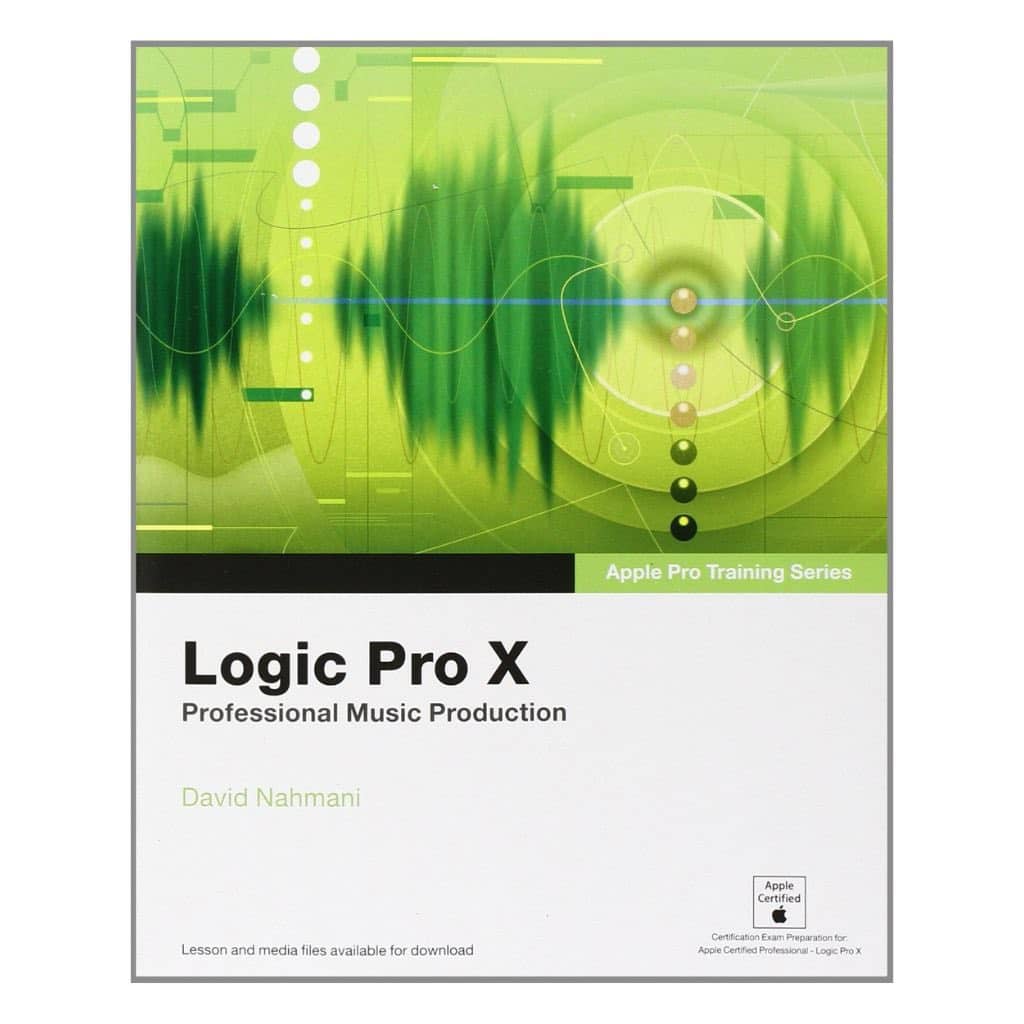
FEATURES: Comprehensive Library of Sounds
OTHER INFO: Advanced MIDI Editing
- User-Friendly Interface
- Robust Feature Set
- Mac-Only Software
When you click ‘Check Price’, you’ll see there are loads of great places to buy this item. Our personal favorite is Sweetwater for the US, and Thomann and Gear4Music for the UK & Europe.
They are the largest music retailers, with excellent customer service, competitive prices, really fast shipping, and the longest guarantees.
The professional musician who wrote this article combined many things,
from the product build, manufacturer’s reputation through to feedback
from other users, to create our famous TedScore™.
FL Studio

FL Studio, affectionately known as Fruity Loops, has gained a massive following due to its user-friendly interface and robust beat-making capabilities. It’s particularly popular with hip-hop and electronic music producers.
Image Line FL Studio Fruity Edition

FEATURES: Perfect choice for basic melody and loop creation.
OTHER INFO: Multi-touch, MIDI learn, live DJ control, visualizer effects plug-in.
- Intuitive interface and user-friendly workflow.
- Affordable price point.
- Free updates for life.
- Limited track count and fewer advanced features compared to higher editions.
When you click ‘Check Price’, you’ll see there are loads of great places to buy this item. Our personal favorite is Sweetwater for the US, and Thomann and Gear4Music for the UK & Europe.
They are the largest music retailers, with excellent customer service, competitive prices, really fast shipping, and the longest guarantees.
The professional musician who wrote this article combined many things,
from the product build, manufacturer’s reputation through to feedback
from other users, to create our famous TedScore™.
Pro Tools
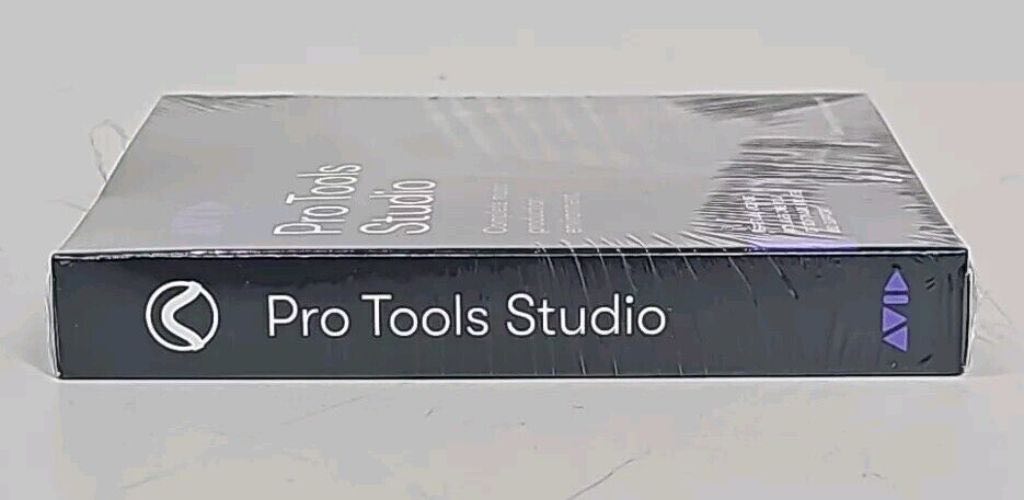
Often referred to as the industry standard, Pro Tools is widely used in professional studios for its powerful editing and mixing capabilities as an audio mixing software. It’s the choice for many audio engineers and film composers.
Avid Pro Tools Studio

FEATURES: Leading DAW software with state-of-the-art 32-bit audio engine.
OTHER INFO: Supports Ambisonics full-sphere surround sound.
- Advanced audio editing and mixing capabilities.
- Perfect for video game design and VR Audio.
- Perpetual license provides long-term access without recurring subscription fees.
- Higher initial cost compared to subscription-based models.
When you click ‘Check Price’, you’ll see there are loads of great places to buy this item. Our personal favorite is Sweetwater for the US, and Thomann and Gear4Music for the UK & Europe.
They are the largest music retailers, with excellent customer service, competitive prices, really fast shipping, and the longest guarantees.
The professional musician who wrote this article combined many things,
from the product build, manufacturer’s reputation through to feedback
from other users, to create our famous TedScore™.
Cubase
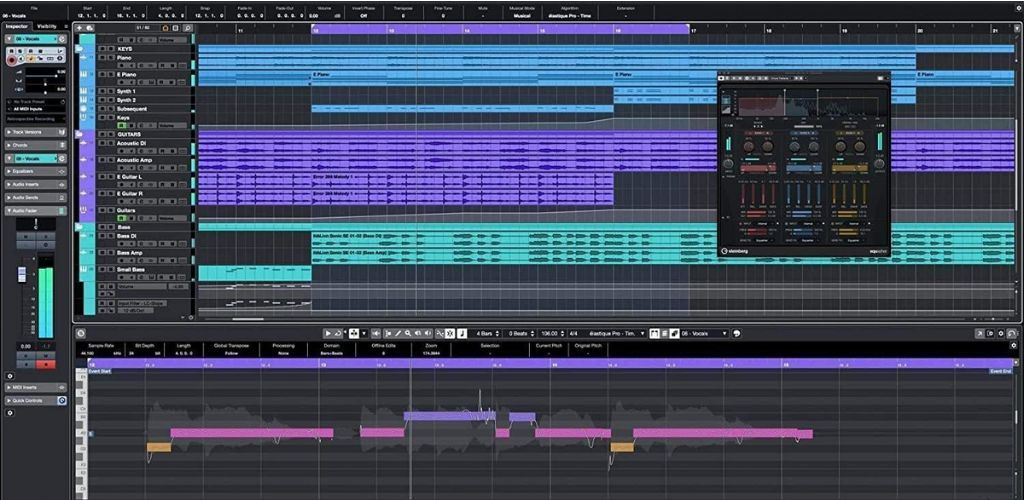
Cubase has a long history in music production and is revered for its MIDI capabilities as a leading MIDI sequencing software with a comprehensive feature set. It appeals to a broad range of genres, from classical to modern electronic music.
Cubase Artist 13
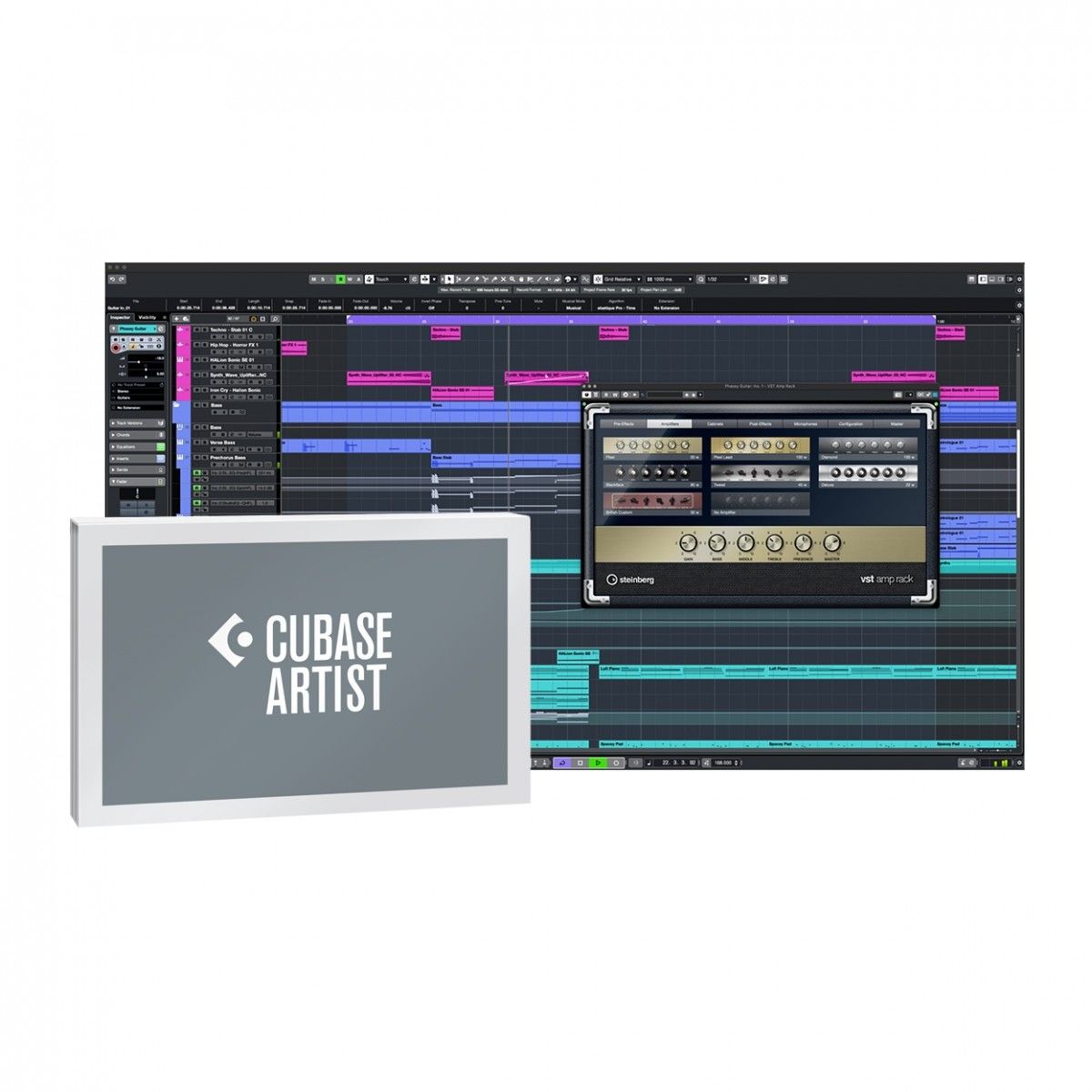
FEATURES: Mid tier version of new flagship DAW.
OTHER INFO: Award-winning 64-bit audio engine for exceptional sound quality.
- Extensive library of over 2,500 instrument sounds and high-end effects.
- Higher price point compared to other entry-level DAWs.
When you click ‘Check Price’, you’ll see there are loads of great places to buy this item. Our personal favorite is Sweetwater for the US, and Thomann and Gear4Music for the UK & Europe.
They are the largest music retailers, with excellent customer service, competitive prices, really fast shipping, and the longest guarantees.
The professional musician who wrote this article combined many things,
from the product build, manufacturer’s reputation through to feedback
from other users, to create our famous TedScore™.
The Popularity Contest – What Producers Are Saying
Let’s explore what producers are saying about their DAWs and other audio production tools.
Many producers rave about Ableton Live’s flexibility, especially when it comes to live performances. Its ability to seamlessly integrate with hardware and other software makes it a favorite for those who love to perform.
Logic Pro X users often highlight its all-in-one approach, providing everything from virtual instruments to mixing tools. This makes it an excellent choice for those who want a complete package without needing to buy additional plugins.
FL Studio enthusiasts appreciate its intuitive layout, which makes it easy to create beats and melodies. The drag-and-drop functionality allows for quick workflow, making it ideal for those who thrive on spontaneity.
Producers who work in professional studios often prefer Pro Tools for its advanced editing features. The precision it offers is unmatched, allowing for meticulous audio manipulation.
Cubase users frequently praise its MIDI capabilities, making it a top choice for composers and arrangers. The software’s robust MIDI editing tools allow for intricate compositions and arrangements.
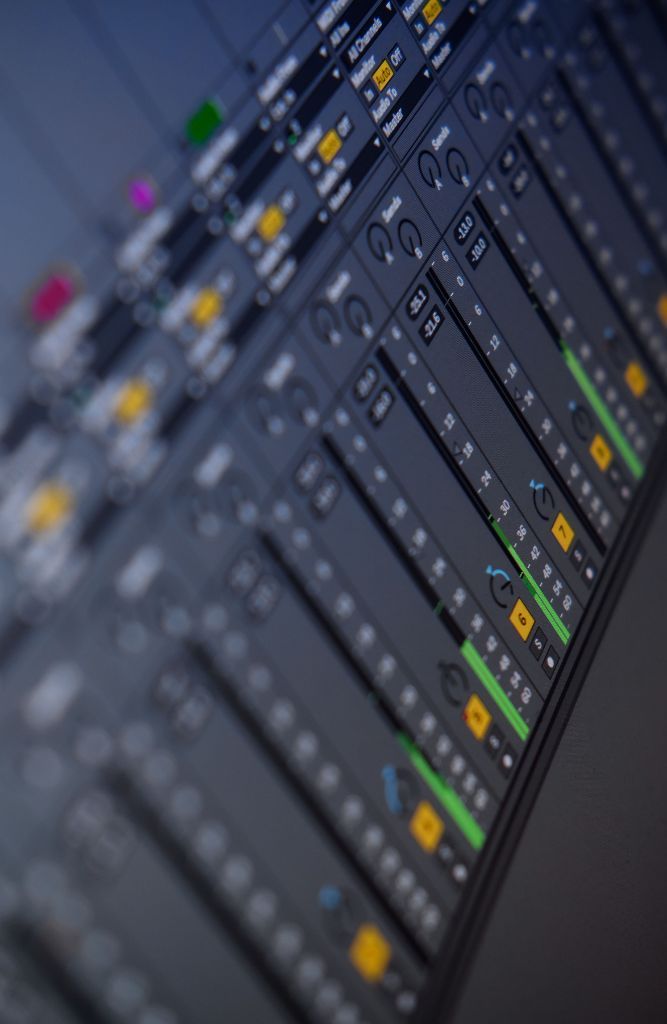
DAWs and Music Styles

Different genres often have their preferred music production tools, and understanding this can help you make an informed choice. Let’s break down which DAWs are favored in various musical styles.
Electronic and Dance Music: Ableton Live and FL Studio are the go-to choices for electronic and dance music producers. Their loop-based workflows and extensive sound libraries perfectly suit these genres.
Pop and Hip-Hop: Logic Pro X is a favorite among pop and hip-hop producers due to its powerful virtual instruments and samples. Many hit records in these genres have been crafted using Logic’s extensive capabilities.
Rock and Indie: When it comes to rock and indie music, Pro Tools and Cubase often take the lead. Their advanced audio editing features and mixing capabilities allow for a polished final product.
Film Scoring and Classical: Cubase and Logic Pro X are popular choices for film composers and classical musicians. Their MIDI capabilities and orchestral libraries make them well-suited for intricate compositions.
Live Performance: If live performance is your jam, Ableton Live is the clear winner. Its intuitive interface and real-time capabilities make it the perfect companion for on-stage creativity.
The Learning Curve: Which DAW Is Easiest to Learn?
Choosing a DAW also depends on how quickly you want to get up and running with your music software. Let’s take a look at the learning curves associated with some popular DAWs.

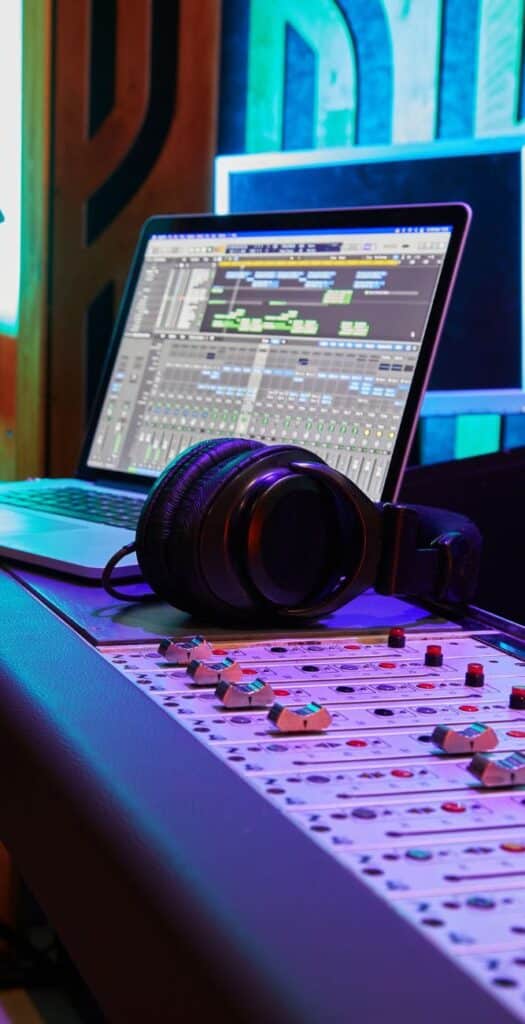

Many beginners find FL Studio to be the easiest DAW to learn due to its straightforward interface. The drag-and-drop functionality makes it accessible for those new to music production.
Ableton Live is also praised for its intuitive design, allowing users to quickly grasp its features. The session view is exceptionally user-friendly, making it easy to experiment with ideas.
Logic Pro X offers a wealth of tutorials and resources, making it easier for beginners to learn. Its well-organized layout helps users find what they need without feeling overwhelmed.
While Pro Tools is powerful, it does come with a steeper learning curve. New users may find the interface complex, but the effort pays off with its advanced capabilities.
Cubase provides extensive manuals and online resources that can help users navigate its features. While it may take some time to learn, the payoff is worth it for those who invest the effort.
What’s Your Budget?
Budget plays a significant role in choosing audio software, and it’s essential to find a DAW that fits your financial situation. Let’s explore the price ranges of popular DAWs.

FL Studio’s Affordable Options: FL Studio offers several versions at different price points, making it accessible to beginners. The entry-level version provides a solid foundation without breaking the bank.
Ableton Live’s Tiered Pricing: Ableton Live also has tiered pricing, allowing users to choose the version that best suits their needs. The Standard version offers ample features for most producers without the higher cost of the Suite version.
Logic Pro X’s One-Time Purchase: Logic Pro X is available as a one-time purchase, making it an excellent value for Mac users. With its extensive features, it’s an investment that pays off in the long run.
Pro Tools’ Subscription Model: Pro Tools offers a subscription model, which can be appealing to those who want to avoid a large upfront cost. However, over time, this can add up, so it’s essential to consider your long-term plans.
Cubase’s Various Editions: Cubase has multiple editions, ranging from entry-level to professional. This variety allows users to choose a version that fits their budget and needs, ensuring everyone can find a suitable option.
Key Features to Look
for in a DAW
When selecting a DAW, it’s crucial to consider the features that will best support your music production needs. Here are some key aspects to look for:

A DAW with an intuitive and user-friendly interface can significantly enhance your workflow. Look for software that allows you to navigate easily and access tools without a steep learning curve.
The availability of a wide range of virtual instruments can greatly expand your creative possibilities. From realistic orchestral sounds to cutting-edge synths, having a diverse palette of sounds at your fingertips can inspire new musical ideas.
For those who rely heavily on MIDI, advanced editing capabilities are essential. Features like detailed note manipulation, automation, and MIDI effects can help you create intricate and expressive performances.
High-quality audio recording is a must for capturing professional-sounding tracks. Ensure your chosen DAW supports multi-track recording and offers robust editing tools to refine your recordings.
A comprehensive library of effects and plugins can help you shape and enhance your sound. From reverb and delay to EQ and compression, having access to a variety of tools allows you to fine-tune your mix and achieve the desired sonic character.
Tips for Music Producers
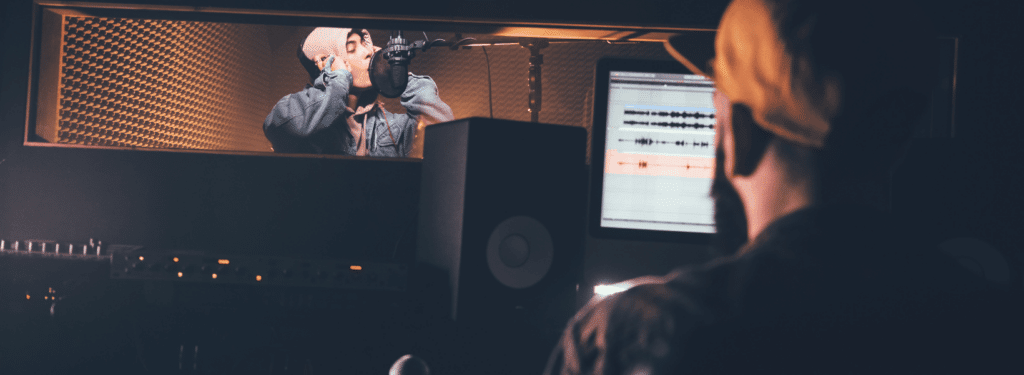
Here are some valuable tips to help you make the most of your DAW and elevate your music production skills:
Experiment with Different DAWs
Don’t be afraid to try out various DAWs to find the one that best suits your workflow and creative style. Each DAW has its unique strengths, and exploring different options can help you discover new ways to approach your music.
Learn Your DAW Inside Out
Take the time to thoroughly learn the features and capabilities of your chosen DAW. Familiarizing yourself with its tools and shortcuts can streamline your production process and make you more efficient.
Utilize Virtual Instruments and Effects
Make the most of the virtual instruments and effects available in your DAW. Experiment with different sounds and processing techniques to add depth and character to your tracks.
Embrace Experimentation
Music production is an art form, and there’s no right or wrong way to create music. Don’t be afraid to try new things, whether it’s a unique sound design technique or an unconventional arrangement. Experimentation can lead to unexpected and exciting results.
Practice Regularly
Like any skill, practice is key to mastering music production. The more you work with your DAW, the more comfortable you’ll become with its features and capabilities. Set aside regular time to produce music and continually challenge yourself to improve.
Conclusion:
What DAW Should You Choose?
A DAW is essential for any music producer, providing a platform where creativity meets technology. When choosing what DAW to use, it’s important to consider it as a piece of music production software that will be central to your creative process.
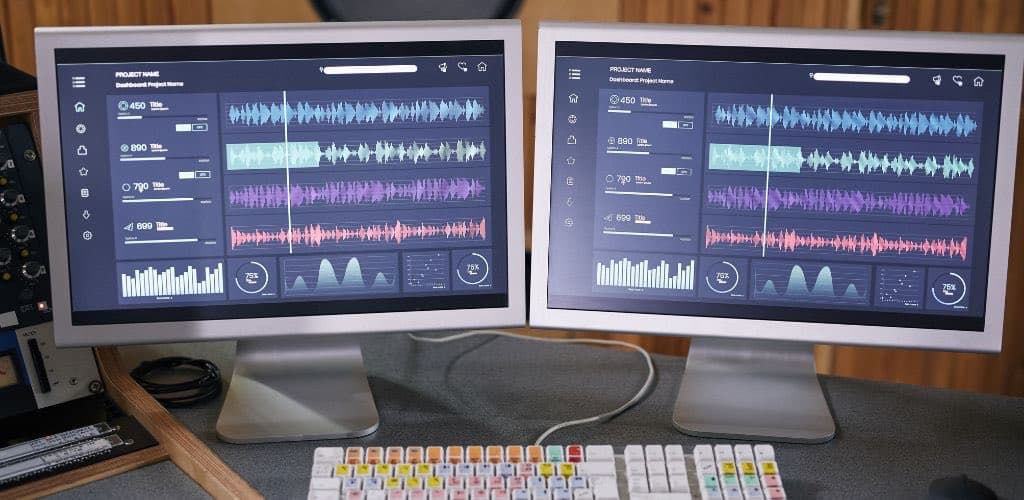
Professional music producers utilize advanced MIDI editing features within their DAWs to craft intricate melodies and harmonies.
The audio recording capabilities allow them to capture high-quality sounds, while robust MIDI editing capabilities enable precise adjustments to their compositions. This combination of tools facilitates innovative sound design, allowing producers to experiment and create unique auditory experiences.
After exploring the various DAWs and the factors that influence their popularity, you might be wondering which one is right for you.
Consider Your Genre: Think about the genre you want to produce and choose a DAW that caters to those needs. For electronic music, Ableton Live or FL Studio may be your best bet, while Logic Pro X is great for pop and hip-hop.
Evaluate Your Budget: Determine your budget and consider the long-term costs associated with each DAW. Look for options that provide the best value for your investment.
Assess Your Learning Style: Consider your learning style and how quickly you want to get started. If you prefer a user-friendly interface, FL Studio or Ableton Live might be the way to go.
Join the Community: Don’t underestimate the power of community support. Choose a DAW with an active user base where you can connect with other producers and share ideas.
The digital audio workstations have revolutionized the music production landscape, offering powerful tools for both novice and professional music producers.
By understanding the key features to look for in a DAW and following practical tips, you can find the perfect software to suit your needs and take your music to new heights.
In conclusion, the world of DAWs is vast and exciting, with options to suit every producer’s needs. Whether you’re just starting or looking to upgrade your setup, there’s a DAW out there that will help you unleash your creativity and bring your musical visions to life.
Happy producing!
Don’t go yet! There’s more…
If you’re eager to find out which software is making waves in the music production world, you won’t want to miss this article on the most popular DAW.
FAQ's
Most EDM producers commonly use audio production software like Ableton Live, FL Studio, and Logic Pro for their music production.
Avid Pro Tools is the DAW most commonly used in Hollywood for film and television production.
FL Studio is often considered the easiest DAW to produce on due to its user-friendly interface and intuitive workflow.
Most producers use digital audio workstations (DAWs) along with MIDI controllers, audio interfaces, and various software plugins to create music.











This overview of music production software is brilliant for anyone trying to find their footing in the digital music creation space. It’s absolutely crucial to choose a DAW that not only fits one’s budget but also their workflow and creative style. I appreciate how this article points out that there’s no one-size-fits-all solution, underscoring the importance of experimenting with different DAWs to find what truly works for you. Kudos to Hugh Richardson for highlighting the key features to look out for in a DAW, and those practical tips for music producers are golden. Embracing experimentation and practicing regularly can dramatically improve one’s proficiency and ultimately, their end product.
I’ve always found it fascinating how different DAWs seem to cater to different music styles. For instance, Ableton is celebrated for live performances and electronic music, while Pro Tools is often hailed as the industry standard for recording studios. It would be intriguing to delve deeper into how these software choices can shape an artist’s sound or even influence their creative process. Do you think certain music styles are inherently tied to specific DAWs, Hugh Richardson, or is it more about the artist’s personal preference and familiarity with the software?
FL Studio beats them all, no contest. These other DAWs are a joke.
Really curious about how you’d rate Logic Pro X for total beginners? I’ve got some basic experience with GarageBand and thinking about stepping up. Is it a big leap, Hugh Richardson?
Absolutely, Becky_S, Logic Pro X seamlessly bridges the gap for GarageBand users. It’s intuitive yet feature-rich.
Hey but Logic is definitely a step up! If you’re comfy with GarageBand, you’ll find Logic familiar yet way more powerful.